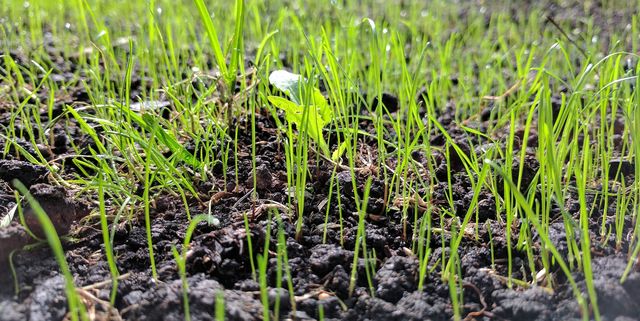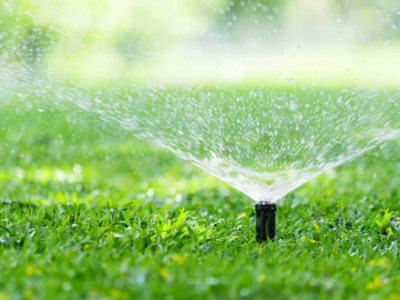If you have a lawn attached to your house, you know the amount of greenery grass adds to it! Moreover, it’s a very nice way to add softness and a comfortable place for kids and pets to play or lurk around.
Growing grass in the lawn can be done by a multiple number of ways, but the most effective one of them is to grow it from seed.
The series of steps that are included in the process are namely procuring the right sort of grass, tiling and preparing the soil, plantation of seeds and lastly, covering the seeds with sown. Let’s take a look at how to go about this process step by step:
Getting the Lawn Ready
- Spring and Fall are the best times of the year to get started with the process. Early Fa is the most recommended time because of the plethora of sunlight available, which is perfect to start germination. Fall is also the time when we get rain, which is an important factor for freshly sown grass. Talking about spring, it is also another prudent time to begin, however, if you begin in spring, it should be early spring when the weather isn’t too hot.
- Picking the right seed in very important. You can make the choice considering factors like time of the year you are planting it, the climate, the sunlight available and the amount of precipitation in the region you live. Look at the following examples:
- Opt for warm season grass like Bermuda, centipede or carpet grass if planting in Spring.
- Cool season grass like Bent grass, Bluegrass or Rye Grass would be ideal for planting in Fall.
- Next, you have to weed your lawn. This is to make sure that there would be no weeds when you sow the seeds. Scrutinize your lawn thoroughly and pull up the weed if you find any.
- Now, to get your lawn all prepared for sowing the seeds, till or dig the place. Use a tiller or a shovel in areas where you want to grow the grass. Loosen up the soil up to 3 inches deep. Remove off any obstructions like pebbles, rocks or sticks. The purpose of this is to aerate the soil, and break clumps if any.
- Rake the soil you had previously dug to spread it, level it up and gradually smoothen the surface. After raking, add two inches of compost to add nutrients.
- Lastly, to make the ground firm and flat, roll the lawn roller over your lawn. Another way is to walk over it for the same purpose. Ensure that you don’t leave any patch. Then, add fertilizers with high phosphorous to the soil.
Sowing the Seeds
- Ensure that the conditions of the soil are perfect, neither dry nor muddy, just the perfect amount of moisture.
- Spread the seeds; by hand if the area is small or use a spreader if the area’s large. The average is 12 to 16 seeds per square inch. Don’t leave any patch empty of the seeds.
- Rake the seeds to ensure they are spread uniformly. They shouldn’t get dug any more than 6.5 mm.
- Once again, use the lawn roller over the area where the seeds were sown, to ensure that the seeds are firmly planted. However, the roller only has to be one-fourth full to provide the right weight.
- Add a layer of mulch now. The purpose of this is to keep the seeds from blowing away, stop weed from growing and to keep the soil nutritious and moist. Peat moss, straw and compost make good options for the mulch.
These were the steps to be followed for sowing the seeds in your lawn. The next question would be: does grass seed go bad?
The answer to that question is: if the seeds are sown in a dry and cool place, the grass seeds can last as long as two to three years. However, there is no guarantee that these aged seeds will provide you the same result as the fresh ones.
As they age, the percentage of the seeds being able to germinate deteriorates. So you will have to more seeds than average to ensure you can the optimal results.
Save this article for when you decide to add grass to your lawn.










Comments